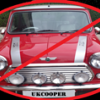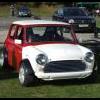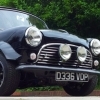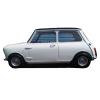
What Does The Damper Pulley Do?
#1

Posted 04 January 2012 - 02:58 PM
Also what dose it do ??
#2

Posted 04 January 2012 - 03:37 PM
I have some of these so if you need one PM me!
#3

Posted 04 January 2012 - 04:15 PM
#4

Posted 05 January 2012 - 09:31 PM
#5

Posted 05 January 2012 - 11:20 PM
#6

Posted 05 January 2012 - 11:40 PM
#7

Posted 05 January 2012 - 11:41 PM
When a piston pushes on the crank to turn it, the crank twists a little, just a like a screwdriver does. When the piston ceases to push, as it reaches the end of the power stroke, the crank springs back and begins to oscillate (vibrate), like a tuning fork. Just like a tuning fork it oscillates at its natural frequency. The trouble arises if the push of the piston coincides with the crank's vibration frequency, as the oscillations will grow, similar to how you push someone on a swing. The outcome is the crank fatigues just like a strip of metal would if you bent it back & forth until it snapped.
For all the slagging off the A Series gets for it's 3 bearing crank, it does mean it's shorter and torsionally stiffer than it would be if it had a couple of extra mains journals. This gives it a higher natural frequency, high enough for the crank to have a reasonable service life (on a road car) without a damper, at least on 998's & 850's.
#8

Posted 05 January 2012 - 11:42 PM
It is indeed a torsional damper...
When a piston pushes on the crank to turn it, the crank twists a little, just a like a screwdriver does. When the piston ceases to push, as it reaches the end of the power stroke, the crank springs back and begins to oscillate (vibrate), like a tuning fork. Just like a tuning fork it oscillates at its natural frequency. The trouble arises if the push of the piston coincides with the crank's vibration frequency, as the oscillations will grow, similar to how you push someone on a swing. The outcome is the crank fatigues just like a strip of metal would if you bent it back & forth until it snapped.
Damn you're smart. You must bee an engineer....
#9

Posted 05 January 2012 - 11:46 PM
#10

Posted 05 January 2012 - 11:58 PM
#11

Posted 06 January 2012 - 12:07 AM
hes not an engineer hes an Ethel lol
A real engineer would be able to calculate the crank's frequency and design a suitable damper. I'm just sharing the knowledge I've gained by being an old(er) git with an interest in engineering & Minis.
Man that stuff is way over my head. All I do is fix the stuff engineers don't engineer properly.
#12

Posted 06 January 2012 - 12:22 AM
For all the slagging off the A Series gets for it's 3 bearing crank, it does mean it's shorter and torsionally stiffer than it would be if it had a couple of extra mains journals. This gives it a higher natural frequency, high enough for the crank to have a reasonable service life (on a road car) without a damper, at least on 998's & 850's.
So does a 998 / 850 have a higher frequency than a 1275?
#13

Posted 06 January 2012 - 12:43 AM
The stroke is shorter, but main journals are also a bit skinnier. Perhaps the reduced torque has as much to do with it?
Either way BL decided a damper wasn't needed on the small bore A's, I'm sure they'd have changed their mind soon enough if the cranks started to snap on a regular basis
There's a bit on crank dampers in the Vizard Bible, maybe there's some facts and figures too?
#14

Posted 06 January 2012 - 08:06 AM
There's a bit on crank dampers in the Vizard Bible, maybe there's some facts and figures too?
It's a small bit in 'Blocks, Cranks, Rods and Pistons'. It isn't absolutely clear but it suggests that the flywheel is the issue.
"The 1300 (1275) has a flywheel with a lot of mass towards the outer edge which can cause considerable crankshaft flexure"
It also says that the liegtenening of rotational parts (clucth, flywheel, pully) will raise the damping frequency upwards away from the working rev range.
Charlie
#15

Posted 07 January 2012 - 11:54 AM
I don't have any speficic data for the Mini, but the resonant frequency will be higher on a short stroke engine, and lower if the bearing journals are of smaller diameter.
1 user(s) are reading this topic
0 members, 1 guests, 0 anonymous users



















